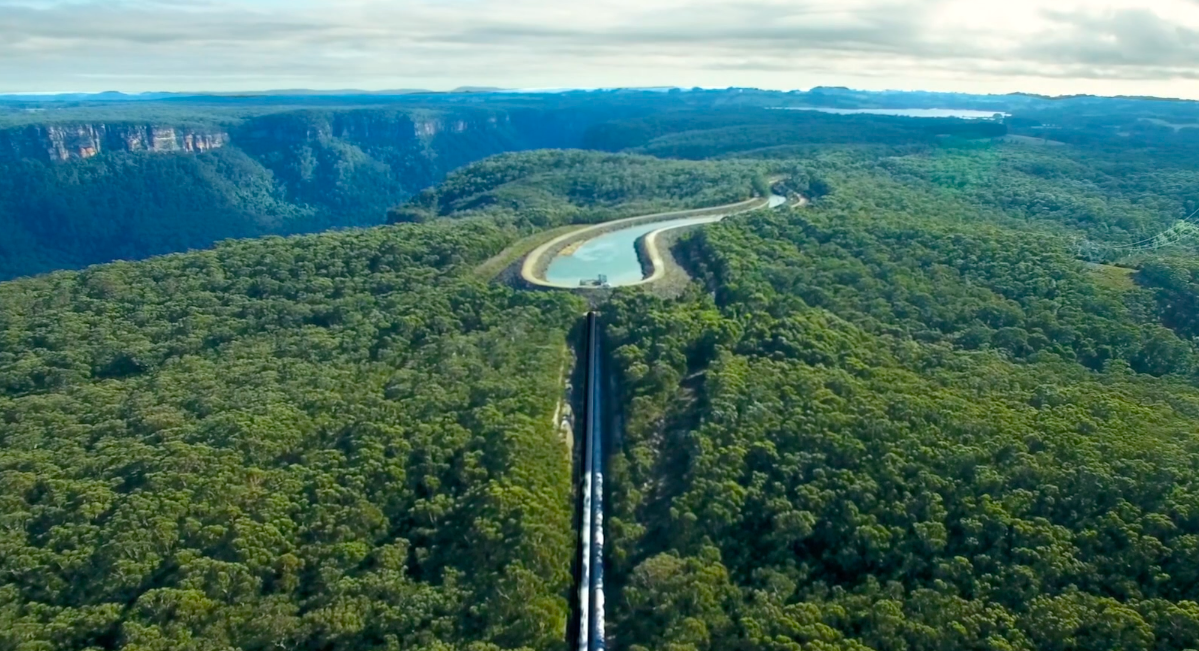The 600 MW/7,200 MWh Oven Mountain Pumped Hydro Energy Storage will have the chance to prove its capability to provide system strength and other services critical to ensuring a reliable, resilient future energy supply for New South Wales (NSW) through a feasibility study partly funded by the Australian Renewable Energy Agency (ARENA).
In a major project milestone, ARENA is providing $951,000 to project proponents Oven Mountain Pumped Storage (OMPS) to undertake a study analyzing the benefits that pumped hydro energy storage (PHES) would have on the development of the New England Renewable Energy Zone (REZ) in northern NSW.
Previously, the Oven Mountain PHES project won support under the NSW Government’s Emerging Energy Program, which backed a total of 31 dispatchable electricity projects. The project was the largest one in terms of capacity among the recipients of grants of up to $500,000 for feasibility studies.
The study will investigate how the proposed Oven Mountain PHES facility can provide system-wide benefits, by storing and enabling variable renewable energy generation, improving system strength, unlocking network constraints and helping to reduce marginal loss factors.
OMPS has partnered with retailer Alinta Energy in the $2.2 million study, which is being undertaken with the assistance of consultants Lloyd’s Register, EY and SMEC, along with the involvement of the Australian Energy Market Operator (AEMO) and electricity transmission company TransGrid.
“What we really like about this project is its potential to pair with low-cost renewables and help us deliver more affordable and reliable energy for our customers,” Ken Woolley, Alinta Energy Executive Director of Merchant Energy, said.
The study will examine the degree to which the proposed PHES plant could unlock further renewable energy investment and the development of the proposed New England REZ.
“Renewable Energy Zones like New England are sunny and windy areas with natural renewable energy resources, but they may be in weak areas of the grid,” ARENA CEO Darren Miller said. “Pumped hydro can provide system security services like frequency and voltage support and it can provide bulk energy storage to help meet the evening peak.”
REZ taking shape
The Oven Mountain PHES project was first proposed more than two decades ago. It plans to utilize two naturally occurring granite basins, with a height differential of 600 meters and located 2.5 kilometers apart to create a closed-loop pumped hydro plant that is expected to provide up to 12 hours of storage. The location on Oven Mountain between Armidale and Kempsey is described as an ideal one for pumped hydro due to its steep topography, high hydrological head and the short distance between two reservoirs.
The project is located in the region that has been identified as a suitable area for renewable energy development by the NSW Government, AEMO and TransGrid. The New England region is one of the three renewable energy zones proposed by the NSW state government. The first REZ to come to fruition will most likely be the State’s Central-West with the construction of a pilot REZ slated to begin in 2022, following extensive consultation with local communities.
The pipeline of massive renewable energy projects in the New England REZ is already taking shape. Last month, a major project nearby Uralla was given the tick of approval for a 720 MW solar farm that will be coupled with up to 400 MWh of battery storage. Another massive project – 4 GW wind, solar and pumped hydro energy storage Walcha Energy hub – has been proposed for the same region close to the backbone of the state transmission network and near retiring coal plants in the Hunter Valley. The first stage of the Walcha Energy Project – which could ultimately supply 15% of the state’s energy requirements – is set to begin generation when coal-fired power station Liddell is scheduled to retire in 2022.
Strategic location
OMPS Director Jeremy Moon said the New England REZ “sits close to the border of NSW and Queensland, and its abundance of renewable resources places it strategically between the two states.” He is confident pumped hydro technology evolution can support Australia’s generation transition.
“With its natural high hydrological head over a distance of around two kilometres, the Oven Mountain site allows for highly responsive synchronous machines to provide grid stability services that have traditionally been provided by fossil fuel generation,” Moon said.
This has been a big week for pumped hydro in Australia following a landmark energy storage services agreement for the 250 MW Kidston pumped hydro project in Queensland between Genex Power and Energy Australia announced on Monday.
Looking at the big picture, AEMO forecasts the development need for utility-scale storage installations will exceed 15 GW by the early 2040s, with opportunities for six-hour and 12-hour storage solutions most able to complement deeper storage solutions such as Snowy 2.0 and/or Battery of the Nation.
This content is protected by copyright and may not be reused. If you want to cooperate with us and would like to reuse some of our content, please contact: editors@pv-magazine.com.









1 comment
By submitting this form you agree to pv magazine using your data for the purposes of publishing your comment.
Your personal data will only be disclosed or otherwise transmitted to third parties for the purposes of spam filtering or if this is necessary for technical maintenance of the website. Any other transfer to third parties will not take place unless this is justified on the basis of applicable data protection regulations or if pv magazine is legally obliged to do so.
You may revoke this consent at any time with effect for the future, in which case your personal data will be deleted immediately. Otherwise, your data will be deleted if pv magazine has processed your request or the purpose of data storage is fulfilled.
Further information on data privacy can be found in our Data Protection Policy.